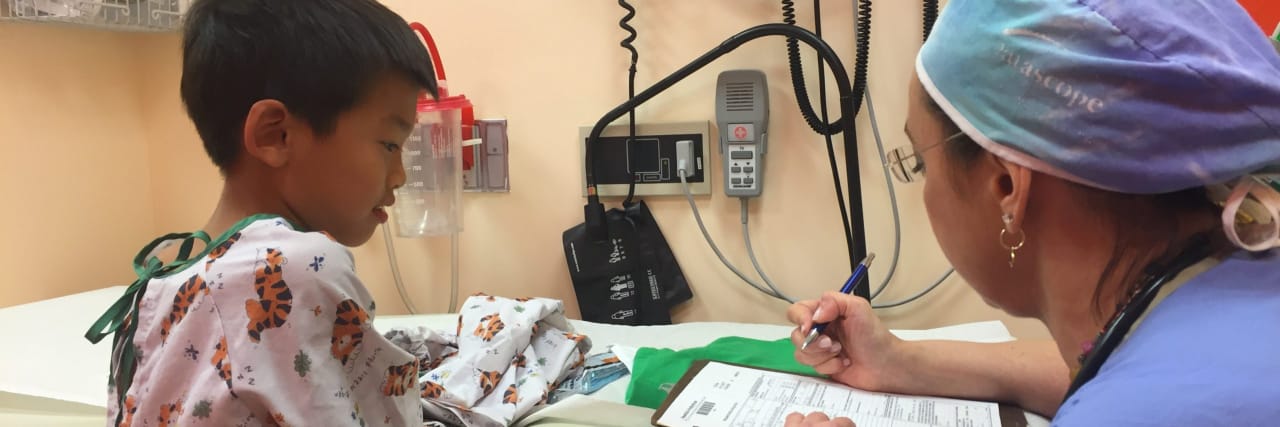Growing up, one of my favorite picture books was called “We’re All different, We’re All the Same.” It used popular Sesame Street characters to illustrate how our body parts differ even though we all have the same ones. This heavily boiled-down concept should be standard practice for doctors of cerebral palsy patients to understand. Essentially, because CP is such a spectrum disability, with no case like the next, I know my body better than any doctor ever will.
It’s easy for a doctor who has spent years in their field to feel like they know best, lean too far into their expertise, and get lost in the technicalities. So many highly knowledgeable doctors walk into the room assuming they need to educate the patient from the ground up, and tell them how they’re feeling. Thank you, but I already know that I will have major leg spasms if I walk around all day.
So often, doctors forget that their patients have lifelong and first-hand experience with cerebral palsy. A doctor’s appointment should be more of a conversation and less of a lecture, similar to the way the best teachers teach. They should work with the family as a team, not to cure CP but to help us enjoy our lives with it. They should treat patients like a canvas already with a base coat and work with them to find colors that complement the existing progress.
The “solutions” are never cookie-cutter. Doctors need to find the most effective solutions given a patient’s existing circumstances. I’ve been told that I will always need to wear leg orthotics to correct my alignment and improve my gait (that’s unless new technologies are developed but that’s another story…). But now that I am in high school, and playing a lot of sports, the orthotics have become even more cumbersome to put on and take off. When the topic came up with my doctor, she was quick to understand my situation and prescribed foot inserts and plenty of stretching along with my sports.
Having cerebral palsy, therapy will always be a part of my life. I have been in therapy since I was 9 months old. Now I’m phasing out some therapy in exchange for sports that I can enjoy alone or with others. But I will always love my therapists.
There is one physical therapist from when I was much younger that I still hold near and dear to my heart. The 8-year-old me would go to her appointments every day over the summer, ever impatient, uncooperative, and very much annoying. Not a day went by without me becoming mischievous and distracted. She could easily have just shouted and demanded that I do the exercises, yet, she was always calm, fun, and devised new methods to get me engaged even when I kicked away her stretching positions. She was constantly positive and happy to see me, despite deep-down knowing that my focus would eventually give way to pesky antics. While holding my leg in a mild hamstring stretch, she would entertain my conversation about how Lionel Messi was the best player in the world.
Eventually, I found out that she was fighting a battle with breast cancer, but you couldn’t tell because she remained perpetually enthusiastic and patient. She wasn’t stone-faced and ready to check me off her daily obligations. She saw me as a person more than patient, never failing to have me leave her appointment with a smile wider than I had entered with. I respect her deeply as a person and a professional, and with that foundation set, the older me is now much more cooperative.
My point really is you could be the most experienced doctor out there, explaining the science behind pronation and its correlation to why my trunk is weak, but if I am functional without the aid of an array of technology, the conversation should halt there. Instead, it should shift to how I keep active, functional, and productive. Find out what the macro goal is and work your way down to develop individual goals. Don’t do it the other way around. Growing up, the perceived end goal was how well I could walk but actually, the best lesson I’ll ever learn from treatment is to walk with my head held high, to walk confidently. My gait will never become typical, but I’m not going to let that upset my participation in sports, interaction with friends, or alter what opportunities can interest me.
I meet my physiatrist every year for a check-up, and every appointment starts with some sort of “What’s going on with your life? Tell me about soccer, tell me about school.” As I share my updates, together we draw out a plan. My doctor doesn’t need to explain that my body tires out quickly, rather she asks what sports I play, and what I do when I hang out with friends. There’s an equal amount of medical terminology as there is everyday banter (although as a teen who’s spent hundreds of hours with medical professionals, my knowledge of medical jargon is fairly astute). My mum’s already done the background research on what interventions we might try and then we ask for my doctor’s professional opinion. She’s also quick to ask my opinion. We discuss together. Really, it’s very fruitful.
No one with CP needs to be taught about our CP because that is impossible. Physically, I might be atypical, but at its core, I’m a run-of-the-mill teen and that should be the starting point for every doctor out there. No doctor can make me any more normal than I already am. Having CP doesn’t make me any less normal than any other teenager. What they need to do is guide me to reach my full potential. As Sesame Street reminds us, “We’re all different, we’re all the same.”

